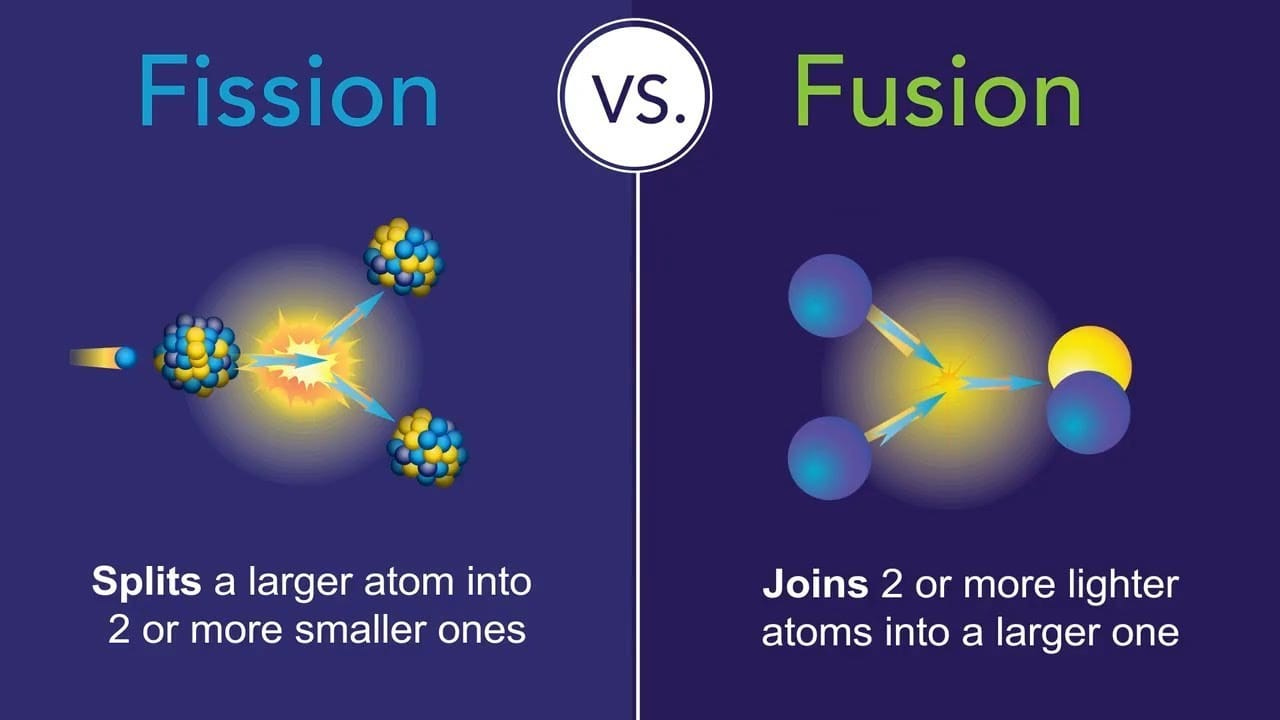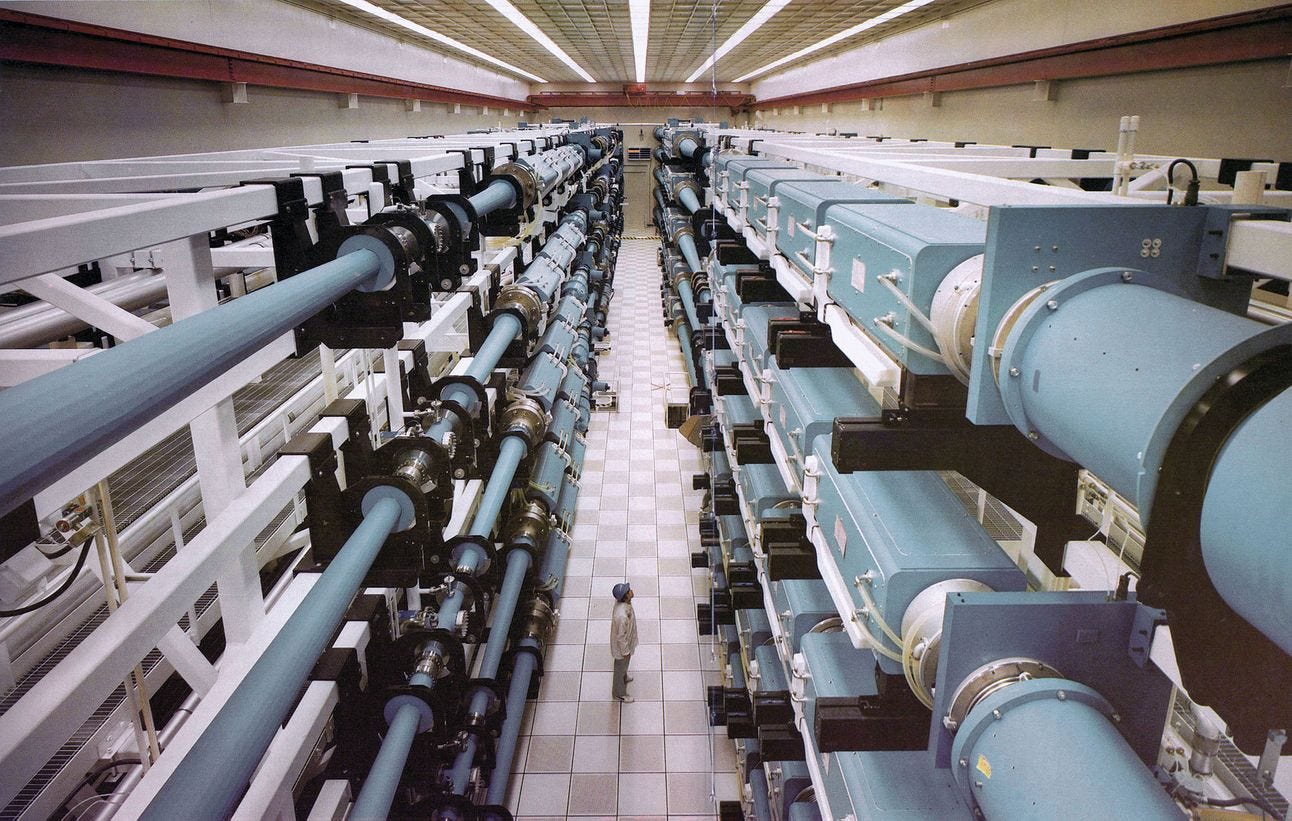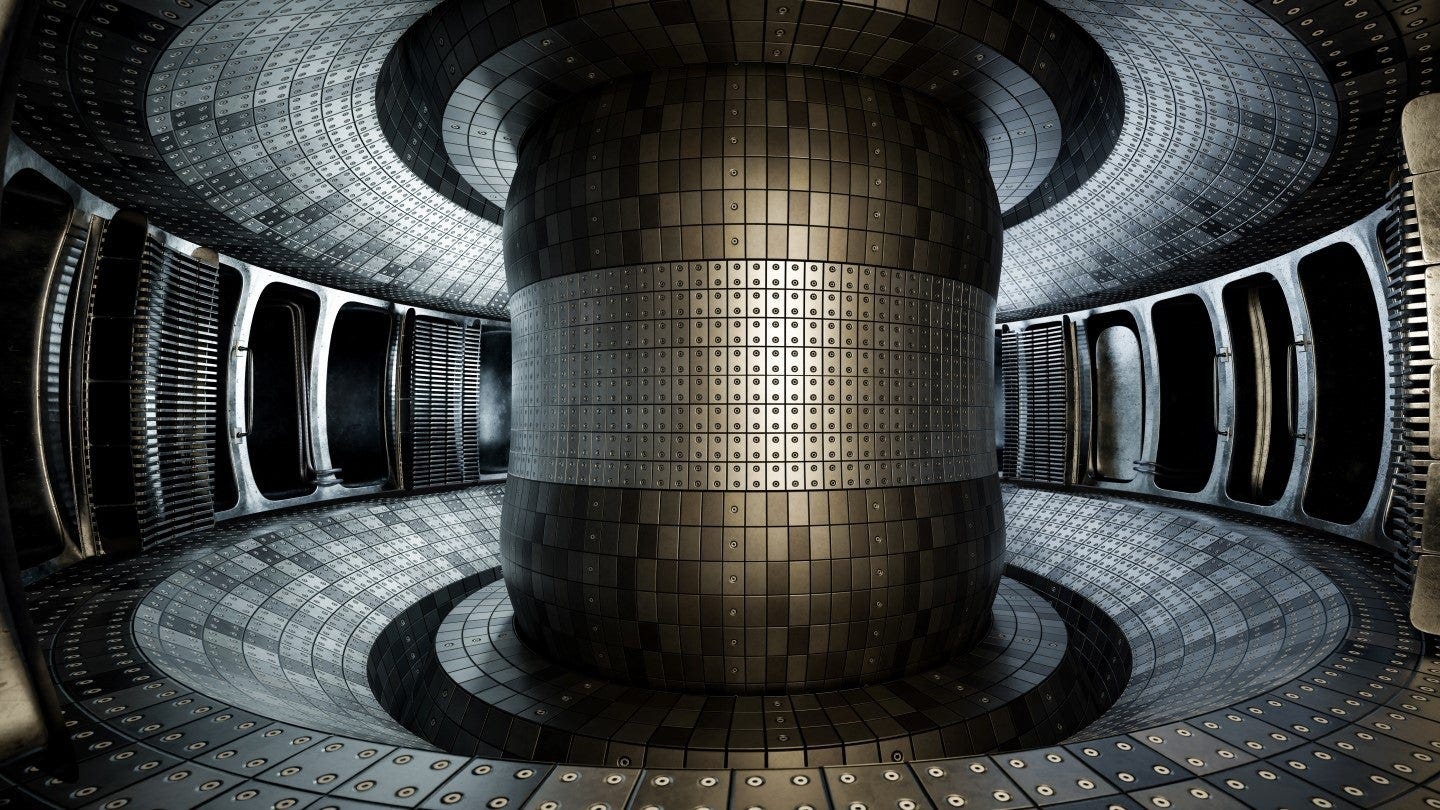Today’s Daily Concept is about nuclear fusion — the process that powers the sun and could one day power the Earth.
The International Atomic Energy Agency defines nuclear fusion as:
“the process by which two light atomic nuclei combine to form a single heavier one while releasing massive amounts of energy.”
If humans could harness this process, which occurs constantly inside the sun, we could hypothetically have a limitless clean energy source.
We’ve been using nuclear fission as a power source since the early 1950s, but we haven’t yet figured out how to achieve fusion energy despite decades of research.
Why? Because it requires extreme conditions that are extraordinarily difficult to achieve on Earth:
Temperatures over 100 million degrees
Intense pressure to force atoms together
Sustained confinement to keep that temperature & pressure together long enough for fusion to take place.
And for nuclear fusion as a source of energy to become feasible, a fusion reactor must produce more energy than it consumes.
This milestone is known as “ignition” or Q > 1, and it has only recently been achieved in small, short bursts.
Fusion ignition has been defined as “producing more fusion energy than the amount of laser energy delivered” to the fusion device.
In December 2022, physicists at the Lawrence Livermore National Laboratory were able to achieve fusion ignition for the first time in what was one of the greatest scientific breakthroughs of the 21st century.
During their experiment, the researchers at the lab were able to produce 3.15 megajoules of energy from 2.05 megajoules of laser energy delivered to the device.
Since then, they have achieved ignition seven more times.
This all sounds great, but 3.15 megajoules is just enough energy to boil ten kettles of water.
So we still have a long way to go before nuclear fusion can be used to power the world.
Investing in Fusion
It shouldn’t be surprising that governments and companies around the world have responded to the ignition breakthrough by committing money and resources to nuclear fusion research.
Every year, investors are providing more and more funding to companies working on nuclear fusion:
The Biden administration took major steps in advancing research and development in nuclear fusion-based energy.
In 2022, it hosted a Fusion Summit and announced public-private partnerships around fusion research.
And in 2024, a bipartisan group of Senators introduced a bill to Congress called the Fusion Energy Act that would allocate further funds to fusion research.
Senator Alex Padilla (D-CA), a co-sponsor of the bill, said:
“Fusion energy holds the potential to power the entire country with a sustainable supply of nearly unlimited, reliable, and carbon-free electricity.”
The second Trump Administration has been more interested in growing nuclear fission reactor capacity than investing in the research needed to make fusion feasible.
President Trump signed several executive orders earlier this year aimed at creating a “nuclear energy renaissance” by making it easier to open fission-powered nuclear reactors in the U.S.
Despite the inconsistency between the Biden and Trump administrations on the importance of investing in fusion research, we should be positive about the prospects of nuclear fusion.
Let’s hope that all this investment and attention leads to more good news about nuclear fusion-based energy production in the coming years.
ART OF THE DAY











Whoa